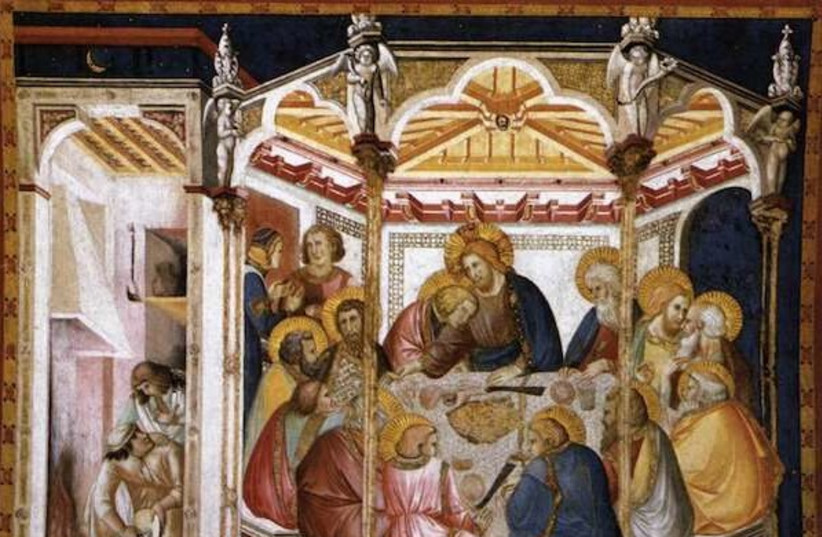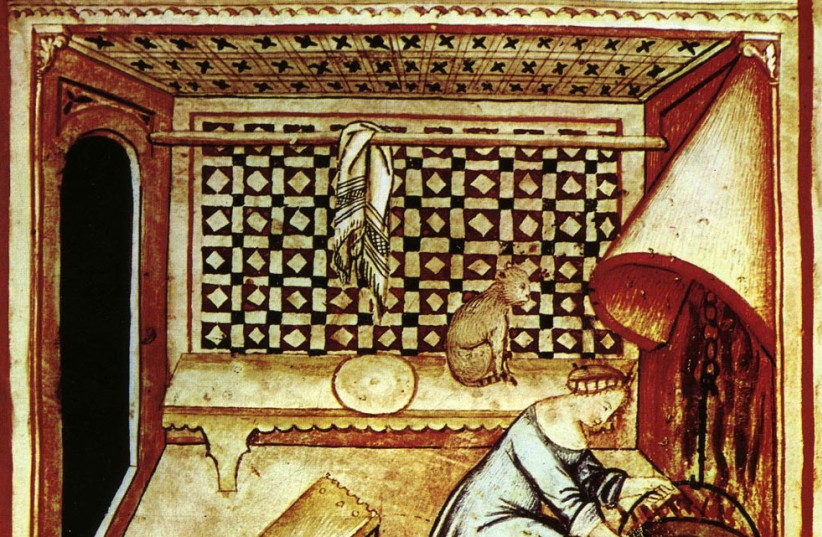Cats in medieval times had a bad reputation - these furry friends were seen as linked to paganism and witchcraft, which was frowned upon in society. Now, researchers have used fifth to 15th-century manuscripts to debunk the previously-held belief that cats were the menaces of medieval society.
Today, we see cats as fuzzy companions. If you're walking down any given street or alleyway in Israel, you will surely pass several who might just try and make your acquaintance. While many still hold onto the belief from the middle ages that cats were dark spirits who brought bad luck and were associated with the supernatural, art historians and researchers have uncovered that cats were not as looked down upon as previously thought.
Here's how we know - if cats were truly concerning creatures in the middle ages, then why would they be portrayed in such entertaining ways?
Felines: A medieval status symbol
The portrayals of these medieval pets are not only often hilarious, but they can teach us a lot about attitudes toward these four-legged friends — and that they were a bit of a status symbol.
At the time, those who had access to pets were ultimately able to use them as a symbol of status. People who kept animals, whether exotic like a monkey or simple like a dog or cat, had the means to import animals from distant lands. People with pets identified more with nobility because having the ability to keep and care for an animal with the sole purpose of affection rather than service work (like farm animals) signified high status.

Many high-status families and individuals would have their pets, commonly dogs and cats, painted into their portraits, specifically to show the world that they have status to show.
Manuscripts and art from the middle ages have placed images of cats at large feasts to identify domestic spaces, depicting their status as household pets.
One such piece was Last Supper by Pietro Lorenzetti. In this medieval piece of art, two pets are depicted in the background. One is a cat, curled up by a fire, while the other is a small dog eating a plate of leftovers. Though these two have no role in the historical narrative associated with the scene, their presence helps depict a homely feeling.
Cats received eulogies in medieval times
Not only did cats receive names and, in many cases, pampering, but their eulogies were recorded in medieval manuscripts. Scholars wrote heartfelt messages to their dearly departed animals and wrote their names in the margins of their manuscripts.
Though some may have frowned upon cats, they were respected just as much, if not more, than many people.
Others did not share the same feelings. One 14th-century preacher openly referred to cats as "useless and overfed accessories of the rich that benefited while the poor went hungry," according to an academic paper published by the University College of London.
Finally, cats were often recorded at the time for their association with the devil. Societal leaders saw their hunting ability as both admirable and concerning. Unfortunately, these skills told some that cats were a real threat, leading to the killing of many members of this four-legged species.

The systematic killing of cats may have contributed to the growth of the Black Death plague; because the disease was spread by fleas and rats, the diminished cat population was unable to hunt the disease-spreading pests.
Many thought that cats had no place in medieval religious spaces, either. However, artwork proves differently. Not only are cats depicted holding crosses, but they are also portrayed in monasteries alongside religious leadership.
So, even if cats were given a bad name in public spaces back in the middle ages, they were certainly loved in private.
